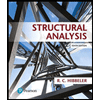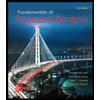Please discuss the Determination of Time of Setting of Hydraulic Cement by Vicat Aparatus
Please discuss the Determination of Time of Setting of Hydraulic Cement by Vicat Aparatus
Chapter2: Loads On Structures
Section: Chapter Questions
Problem 1P
Related questions
Question
Please discuss the Determination of Time of Setting of Hydraulic Cement by Vicat Aparatus

Transcribed Image Text:Materials and Equipment
Portland cement
Scales and weight
Graduated cylinder, 200 or 250 ml capacity
Vicat apparatus
Procedure
1. Preparation of Cement Paste
Mix 650 grams of cement with the percentage required for normal consistency following the
procedure of mixing hydraulic cement pastes and mortars of Plastic consistency.
2. Molding of Test Specimen
a Quickly form a cement paste into a ball and toss six times from one hand to the other
maintaining the distance between the hands about 152 mm apart.
b. Press the ball into the conical ring filling the ring with paste completely. Remove the excess|
paste by a single movement of the palm of the hand.
c. Place the ring on a glass plate. Šlice off the excess paste by a single oblique stroke of a
sharp-edged trowel. Take care not to compress the paste during cutting or smoothing excess
paste.
d. Immediately after molding, place the specimen in the moist closet or moist room with a
temperature of 23°Cc (734 F) =1.7°C (3°F) ; and allow it to remain there except when
determinations of time of setting are being made. The specimen shall remain in the conical
mold, supported by the glass plate throughout the test period.
3. Time of setting Determination
a Allow the specimen to remain in the moist cabinet or room for 30 minutes after molding
without being disturbed. Determine the penetration of the one mm needle at this time and
every 15 minutes thereafter until a penetration of 25 mm or less is obtained.
b. For the penetration test, lower the needle of the rod until it rests on the surface of the cement
paste. Tighten the set screw and set the indicator at the upper end of the scale, or take an
initial reading. Release the rod quickly by releasing the set screw and allow the needle to
settle for 30 seconds, then take the reading to determine the penetration. No penetration test
shall be made closer than 4 in. from any previous penetration and nor shall be made closer
than 3/8 in from the inside mold.
c. Record the results of all penetration tests and, by interpolation detemine the time when a
penetration of 25 mm is obtained which the initial is setting time.
d. At the time the needle does not sink visible into the paste, it is considered too be final setting
time.
Expert Solution
This question has been solved!
Explore an expertly crafted, step-by-step solution for a thorough understanding of key concepts.
Step by step
Solved in 2 steps

Knowledge Booster
Learn more about
Need a deep-dive on the concept behind this application? Look no further. Learn more about this topic, civil-engineering and related others by exploring similar questions and additional content below.Recommended textbooks for you


Structural Analysis (10th Edition)
Civil Engineering
ISBN:
9780134610672
Author:
Russell C. Hibbeler
Publisher:
PEARSON

Principles of Foundation Engineering (MindTap Cou…
Civil Engineering
ISBN:
9781337705028
Author:
Braja M. Das, Nagaratnam Sivakugan
Publisher:
Cengage Learning


Structural Analysis (10th Edition)
Civil Engineering
ISBN:
9780134610672
Author:
Russell C. Hibbeler
Publisher:
PEARSON

Principles of Foundation Engineering (MindTap Cou…
Civil Engineering
ISBN:
9781337705028
Author:
Braja M. Das, Nagaratnam Sivakugan
Publisher:
Cengage Learning

Fundamentals of Structural Analysis
Civil Engineering
ISBN:
9780073398006
Author:
Kenneth M. Leet Emeritus, Chia-Ming Uang, Joel Lanning
Publisher:
McGraw-Hill Education


Traffic and Highway Engineering
Civil Engineering
ISBN:
9781305156241
Author:
Garber, Nicholas J.
Publisher:
Cengage Learning